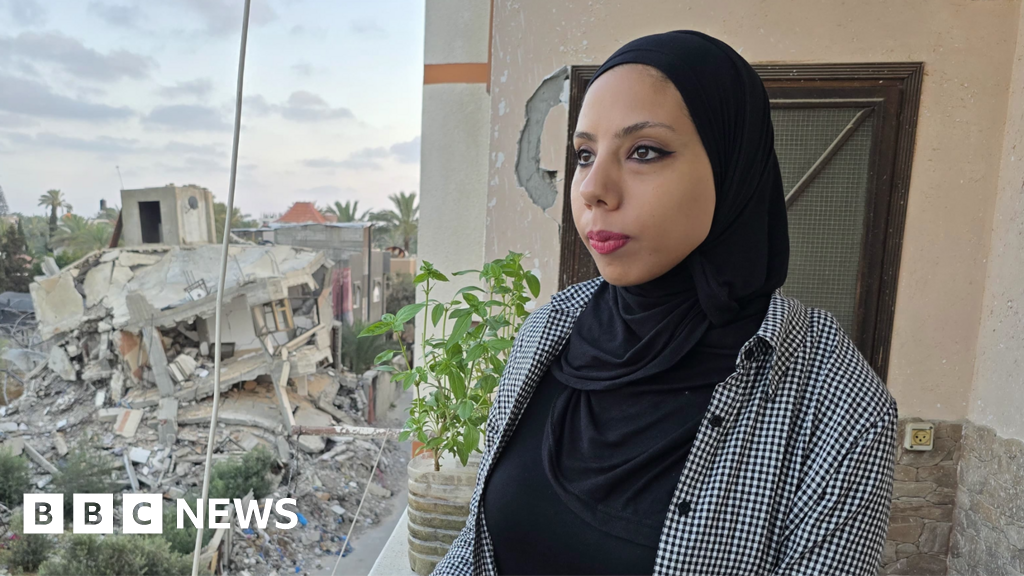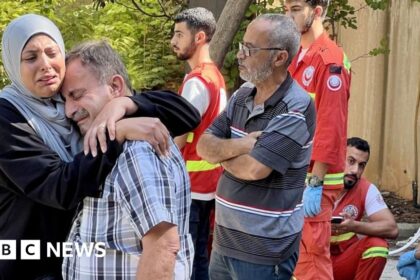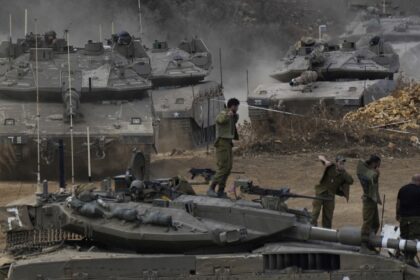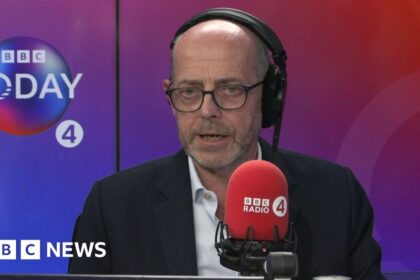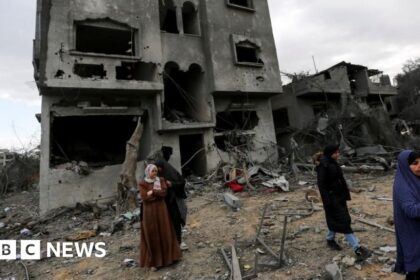**Life in Gaza: A Descent into Chaos**
Hanya Aljamal, a 28-year-old English teacher, was once living her best life. She had a flat of her own, was on track to get a scholarship for a Master’s degree in international development, and was applying to colleges in the US. But that was two years ago. Today, she finds herself in a warzone, struggling to make sense of a world that seems to be falling apart.
Gaza, a 25-mile strip of land on the Mediterranean Sea, has been a war zone since October 2023. Hanya’s school closed when the war began, and she now works for an aid organization called Action for Humanity. Her days are filled with trying to help others, while her nights are marked by the constant sound of drones buzzing overhead – a psychological torture that leaves her feeling helpless.
The apartment Hanya shares with her family is their fifth residence since the war started. Most Gazans live in temporary housing, and 90% have been displaced multiple times. The statistics are staggering, but what’s even more striking is the human cost. Hanya has lost count of how many people she knows who have died during the conflict, including students, colleagues, and even a cousin who was trying to get aid.
**The Human Cost of War**
Hanya’s story is just one among many in Gaza. The war has left families without homes, without food, and without hope. Aid distribution points are being targeted by Israeli forces, leaving many desperate for basic necessities like protein-rich food. Hanya recounts the tragedy of a young girl who was killed while trying to get aid – a heartbreaking reminder of the devastating consequences of this conflict.
As the war drags on, Gazans are struggling to maintain their sense of identity and purpose. Schools have been destroyed, leaving many children without an education or a future. Even Hanya’s own dreams of studying abroad seem like a distant memory now.
**Finding Beauty in Chaos**
Despite the chaos around her, Hanya finds moments of beauty in unexpected places – like the colorful kites that fly overhead, symbolizing hope and childhood innocence. She also takes comfort in the small acts of resistance, like the gardener across from her who tends to his plants with care and attention.
For many Gazans, finding solace is a daily struggle. The constant barrage of drones and gunfire makes it hard to even think straight, let alone find meaning or purpose. As Hanya says, “You can’t control anything, not your thoughts, your wellbeing, or even who you are.”
**A Descent into Grey**
Hanya’s description of Gaza is stark – everything is grey, covered in soot, or destroyed. The sky above seems like a fleeting respite from the monotony and despair below. It’s hard to find beauty in such a desolate landscape.
And yet, Hanya continues to find ways to cope, to adapt, and to survive. She updates her resume to remove her professor’s name, now dead along with many others she knew. Grieving is something that many Gazans cannot afford – not when there are more pressing needs like food, shelter, and safety.
**A Call for Action**
Hanya’s story is a reminder of the human cost of war – the lost lives, the shattered dreams, and the struggle to maintain hope in the face of adversity. As we read about her experiences, we’re forced to confront our own complicity in this conflict. We must ask ourselves: what can we do to support Gazans like Hanya? How can we amplify their voices and demand action from those who have the power to change the course of history?
**Read More**
To learn more about Hanya’s story and the situation on the ground in Gaza, please visit [www.bbc.com](http://www.bbc.com).
—
Note: The original article has been edited for brevity and clarity while maintaining its core message and content.




